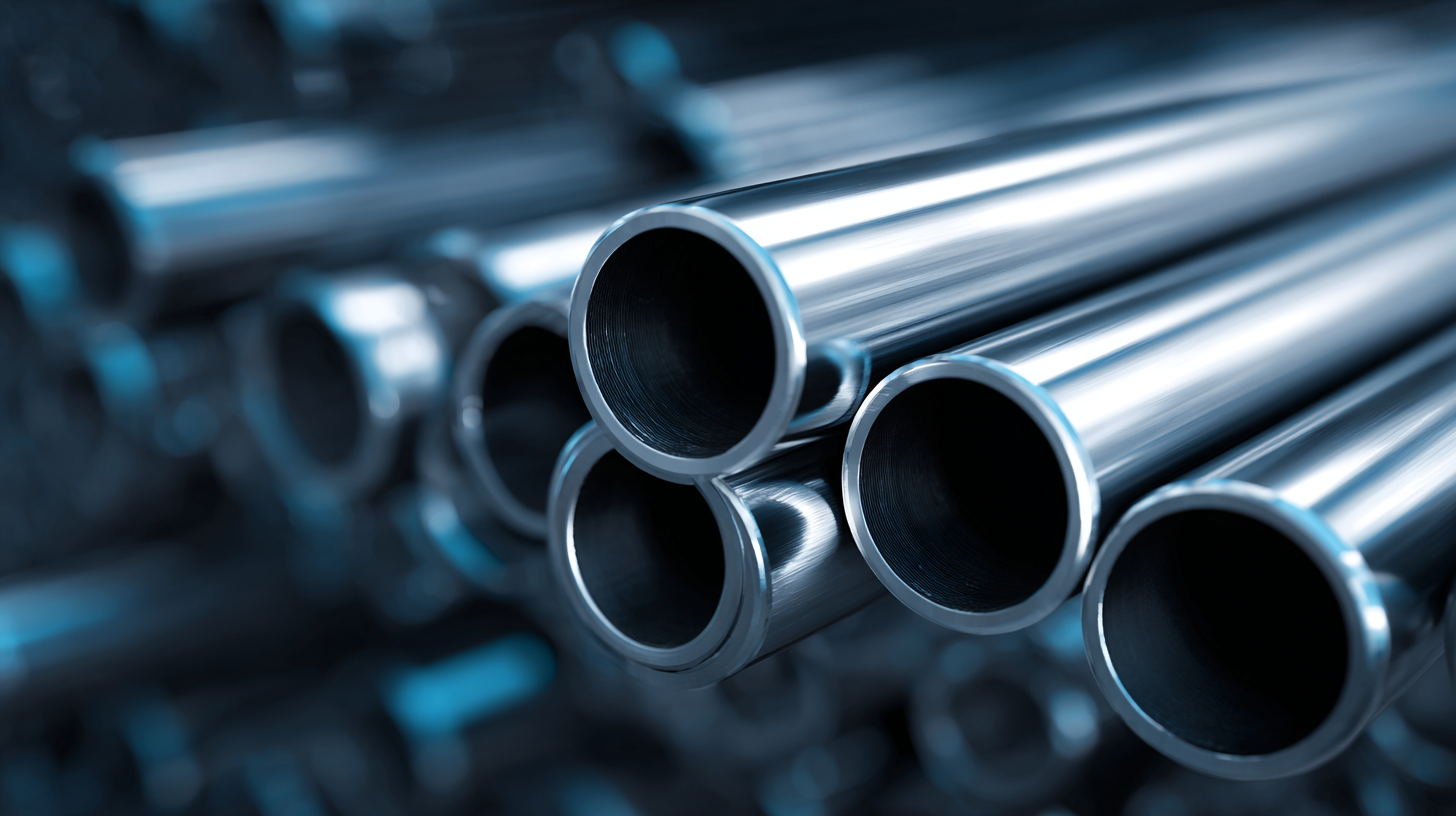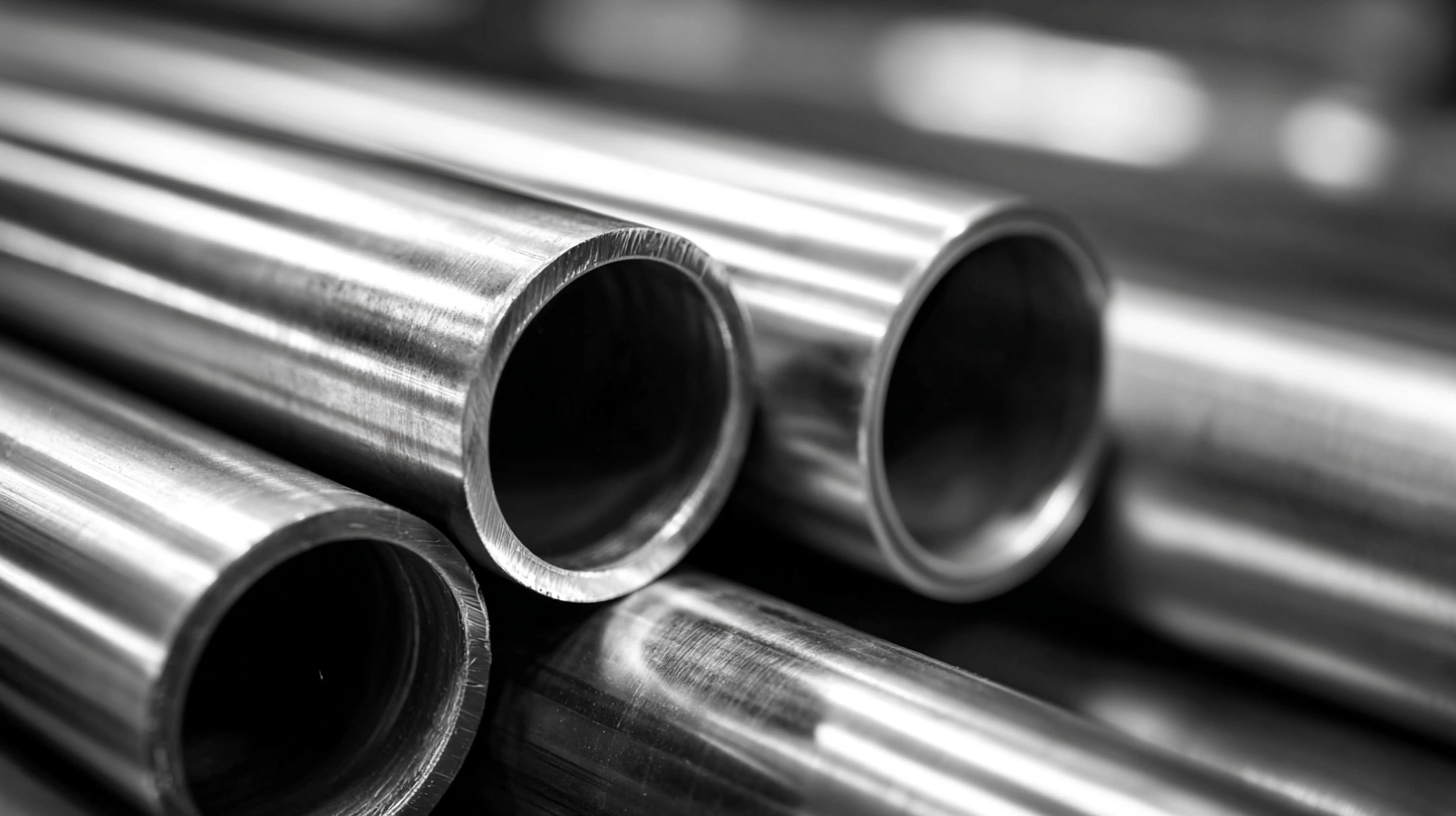In high-pressure applications, the selection of the appropriate materials is critical for ensuring safety, reliability, and performance. Among various options, the Stainless Seamless Pipe stands out due to its superior structural integrity and resilience under extreme conditions. According to the Global Stainless Steel Seamless Pipe Market Report, the demand for seamless pipes is projected to grow significantly, with the market set to reach USD 15 billion by 2027, driven by industries such as oil and gas, chemical processing, and power generation. Choosing the right Stainless Seamless Pipe entails understanding various parameters, including material grade, wall thickness, and specific application requirements. This comprehensive guide aims to equip professionals with the necessary insights to make informed decisions for high-pressure applications, ensuring optimal performance and longevity of their systems.

In high-pressure applications, the choice of materials plays a pivotal role in ensuring both safety and efficiency. Stainless steel seamless pipes are increasingly recognized as essential components due to their ability to withstand extreme conditions without compromising integrity. Unlike welded pipes, seamless options offer greater strength and resistance to corrosion, making them particularly suited for applications where durability is paramount. The seamless manufacturing process eliminates potential weak points associated with welded joints, thereby enhancing the overall reliability of the piping system.

In the context of hydrogen production and application technology, stainless steel seamless pipes stand out as key materials. They not only facilitate efficient gas transport but also resist the detrimental effects of hydrogen embrittlement, a significant concern in high-pressure operations. As industries pivot towards sustainable energy solutions, the demand for robust and reliable piping systems is expected to surge, highlighting the importance of selecting the right materials capable of handling the evolving challenges in high-pressure environments. The growth of the industrial tubes market underlines this trend, showcasing a forward momentum driven by advancements in technology and infrastructure developments.
When selecting seamless pipes for high-pressure applications, understanding key specifications is essential. The primary factors to consider include material grade, wall thickness, and diameter. According to the American Society for Testing and Materials (ASTM), grades such as 304 and 316L are widely used due to their excellent corrosion resistance and mechanical properties. For high-pressure environments, it's often recommended to use pipes with increased wall thickness to withstand the considerable stresses involved. For instance, a pipe with a wall thickness of 0.25 inches can handle pressures up to 2,500 psi, making it suitable for many industrial applications.
In addition to material and thickness, pipe diameter plays a crucial role in performance. A study by the International Journal of Pressure Vessels and Piping emphasizes that larger diameters can allow for greater flow rates, which is vital in high-pressure systems. However, it’s also important to balance size with the system's overall design to prevent issues such as cavitation or excessive turbulence. Understanding these specifications enables engineers to design safer and more efficient high-pressure systems.
When selecting stainless seamless pipes for high-pressure applications, evaluating material grades is crucial. The most commonly used grades include ASTM A312 TP304, TP316, and TP310. TP304 offers good corrosion resistance and strength, making it suitable for moderate temperatures and pressures. On the other hand, TP316 provides enhanced resistance to pitting and crevice corrosion, particularly in chlorinated environments, while TP310 is ideal for high-temperature applications due to its exceptional oxidation resistance.
Tips: Always consider the specific environment in which the pipe will be used. Factors such as temperature, pressure, and chemical exposure can significantly affect the performance of the material. Conduct thorough research to understand the mechanical properties required for your application and ensure compliance with relevant industry standards.
Additionally, always refer to the manufacturer's specifications and guidelines. Different manufacturers may have variations in their products, so it's essential to validate the suitability of the selected grade for your anticipated operating conditions. Getting samples for testing is also a good practice to avoid any unexpected failures during actual operation.

When selecting stainless seamless pipes for high-pressure applications, it is essential to assess the manufacturing processes and quality standards in place. The integrity and performance of seamless pipes are influenced significantly by the methods used during production, including extrusion and rotary piercing. These processes are critical in ensuring that the pipes maintain uniformity, dimensional accuracy, and the required mechanical properties. Understanding variations in manufacturing techniques can aid engineers and project managers in making informed decisions that align with specific application needs.
Quality standards for stainless seamless pipes further play a vital role in guaranteeing reliability under high-pressure conditions. Compliance with established norms, such as ASTM specifications, ensures that the pipes have undergone rigorous testing for properties like tensile strength, corrosion resistance, and weld integrity. Manufacturers adhering to such standards typically engage in thorough inspection processes, including non-destructive testing and hydrostatic pressure tests, to verify product safety and functionality. For industries that demand high-performance materials, prioritizing companies that commit to stringent quality measures will translate into enhanced operational efficacy and reduced risks.
| Attribute | Value | Notes |
|---|---|---|
| Material Grade | 316L | Corrosion resistant, ideal for high-pressure. |
| Outer Diameter Range (inches) | 0.5 to 24 | Varies based on specific applications. |
| Wall Thickness (inches) | 0.065 to 1.5 | Determined by pressure requirements. |
| Pressure Rating | Up to 5,000 PSI | Based on wall thickness and diameter. |
| Manufacturing Process | Hot Finished | Provides superior strength and integrity. |
| Quality Standards | ASTM A312 | American standard for stainless steel pipes. |
| Certification | ISO 9001 | Ensures quality management systems are in place. |
| Delivery Time | 4-6 weeks | Depends on order size and customization. |
When selecting suppliers and vendors for stainless seamless pipes intended for high-pressure applications, it's crucial to prioritize quality and reputation. Begin by researching potential suppliers to assess their standing in the industry. Look for vendors with a proven track record of providing high-quality seamless pipes that meet industry standards and have a history of supplying to reputable companies. Certifications such as ISO and ASME can provide reassurance regarding their adherence to manufacturing and safety guidelines.
In addition to evaluating quality, consider the supplier’s technical expertise and ability to cater to your specific needs. Engaging in discussions about your project requirements can highlight a supplier's commitment to understanding your unique specifications. A reliable vendor should offer guidance on material selection, availability, and performance characteristics of their products. Furthermore, request samples or documentation of past projects to gauge their reliability and customer satisfaction levels. By taking these steps, you can ensure that you choose a supplier capable of delivering the right stainless seamless pipes that align with your high-pressure application demands.





